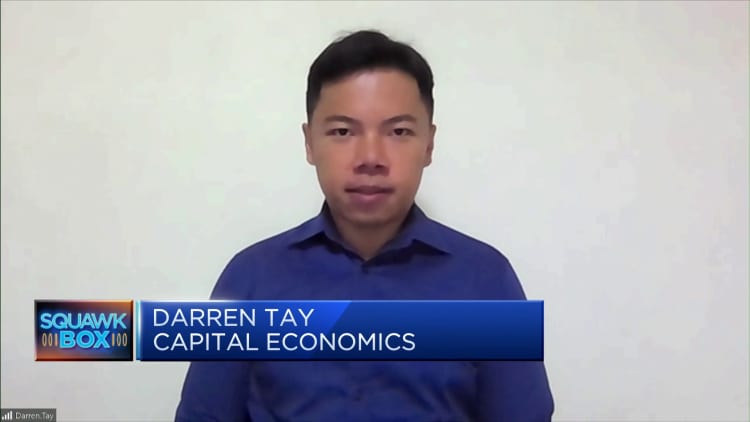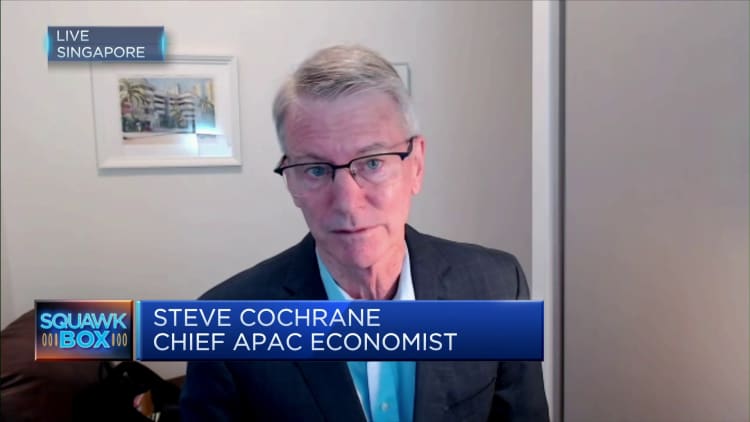Immediately after extra than two a long time of stringent Covid-19 border controls, Japan reinstated visa-absolutely free travel to 68 nations on Tuesday.
Maki Nakamura | Digitalvision | Getty Images
The Japanese yen’s slump towards the U.S. greenback has sparked some worry in Japan, but that could motivate far more tourists to check out the country once more, in accordance to analysts — however they say a sizeable rebound in the tourism sector will never occur with out the return of Chinese vacationers.
Right after more than two years of rigorous Covid border controls, Japan reinstated visa-absolutely free vacation to 68 international locations on Tuesday.
Bundle tours are no longer needed, the Japan National Tourism Group (JNTO) noted.
The each day entry limit of 50,000 persons and the on-arrival PCR examination at the airport have been scrapped. Having said that, it is nevertheless obligatory for vacationers from all nations and areas to post a negative Covid examination certificate or proof of vaccination, JNTO stated.
With the easing of constraints and the depreciating yen, tourism to the nation will return immediately — in particular from Asia, claimed Jesper Koll, director of money solutions business Monex Team advised CNBC.
Koll mentioned that even though travelers from Europe and the U.S. are vital in aiding Japan’s tourism restoration, “the bulk of the enthusiasm and the bulk of travel” nevertheless occur from nations like Singapore, the Philippines and Thailand.
“The cheapness of the yen clearly will increase the chance of tourism contributing tremendously to the economic climate,” Koll said. “As the limits get rolled back even more, and the capability of inbound flights open up, I anticipate that we will see inbound investing and inbound tourism speed up very, really speedily.”

In 2019, Japan welcomed 32 million international website visitors and they spent about 5 trillion yen, but inbound spending is now only a person-tenth of that, according to a Goldman Sachs be aware from September.
The expense bank estimated that inbound spending could access 6.6 trillion yen ($45.2 billion) soon after a calendar year of comprehensive reopening, as tourists will be encouraged to shell out a lot more due to the fact of the weak yen.
“Our ball-park estimation points to most likely much larger inbound paying out of ¥6.6 tn (once-a-year) article total reopening vs . the pre-pandemic level of ¥5 tn, partly served by the weak yen,” the be aware claimed.
The Japanese currency plunged to a fresh new 24-calendar year reduced and was at 146.98 against the greenback during London’s trading hours on Wednesday.
Japanese officials intervened in the fx market in September when the dollar-yen strike 145.9.
“I you should not assume the yen has been as low-priced as it is now in residing memory,” mentioned Darren Tay, Japan economist at Money Economics, said on CNBC’s “Squawk Box Asia” on Tuesday. “Travelers had been by now clamoring for borders to reopen … So I imagine the weak yen will provide as a different motivating issue” for them to travel to Japan once again.
Even though flight ticket selling prices to Japan have elevated because the announcement was manufactured, travelers will nevertheless get a bang for their buck when they invest in Japan, Koll claimed.
“You can eat twice as numerous hamburgers, two times as much sushi for your dollar right here in Japan when compared to the United States, and even as opposed to the rest of Asia,” he added.
Chinese tourists ‘hold the key’
The outlook for Japan’s tourism recovery appears promising, but “the over-all impression on Japan’s financial system may possibly not be a net constructive” as Chinese tourists have nonetheless to return, Tay claimed.
“Chinese tourists truly make up a massive volume of what foreign travellers invested back again in 2019 … They’re however pursuing a zero-Covid technique so they will never be returning at any time soon,” he explained.

Goldman Sachs explained Chinese holidaymakers, who produced up 30% of overseas readers to Japan in 2019, could return only in the 2nd quarter of 2023.
After China thoroughly reopens, inbound investing from Chinese readers has the likely to raise from 1.8 trillion yen in 2019 to 2.6 trillion yen — .5% of Japan’s gross domestic product, mentioned Yuriko Tanaka, economist at Goldman Sachs.
“Chinese visitors hold the critical to a bona fide rebound in inbound investing,” Tanaka said.

Without readers from China, it could get some time right before inbound shelling out in Japan returns to pre-pandemic levels, Koll claimed. But sturdy demand from the rest of Asia could generate inbound investing to return “reasonably promptly” to in excess of $3 trillion by March 2023.
Outlook for yen
As marketplaces count on the U.S. Federal Reserve to hike desire rates by 75 foundation details in November, the yen will go on to weaken as the greenback carries on to reinforce, stated Koll.
“You’ve got bought the widening curiosity level differential [between Japan and the U.S.], and the Federal Reserve is not performed but. There is at minimum one far more fascination level hike in the cards,” he said.
He extra that yen could weaken additional toward the 155 amount, strengthening only upcoming spring — and that would not be the result of motion from Japan, but of the Fed signaling that it has “stepped plenty of on the brake.”






More Stories
Finding Your Voice And Using It To Make Ridiculously Good Content
5 takes from Wall Street analysts
Amazon announces AWS Clean Rooms